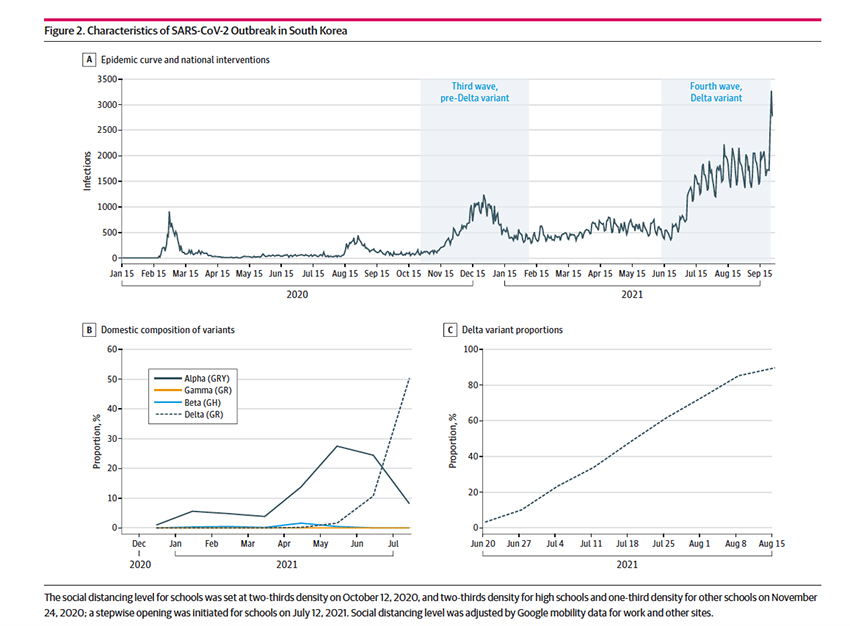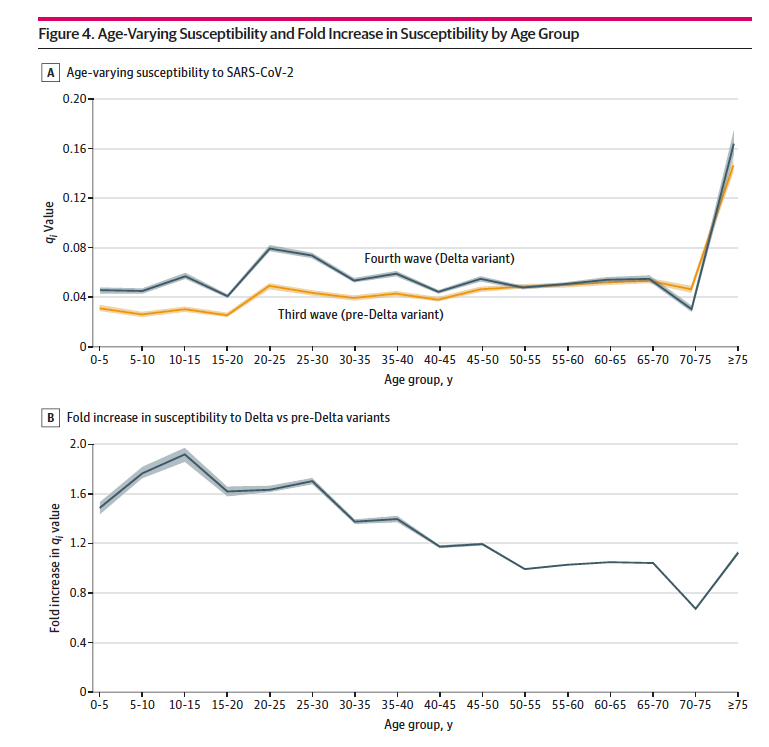The study is relatively straightforward. The researchers looked at the PCR positive cases before Delta, October 15 to December 22, 2020, and during Delta, June 27 to August 21, 2021

- 107,000 confirmed infections, 27,000 in the 3rd wave, 80,000 in the 4th wave – a 3-fold increased infectiousness
- In those age 19 or less, 11% of the confirmed case in the 3rd wave, 16.7% in the 4th
- In those age 60 or more, 28% in the 3rd wave, 10% in the 4th
- When adjusted for population percentages, infections in those age 10-15 doubled between the 3rd and 4th wave. There was no discernable change between the two waves for those over 50 (except those over 70).

The study comes with limitations, don’t they all? First, this is data from Korea. US data showed no change in hospitalization for children pre and post-Delta. Second, children tend to be asymptomatic so that PCR-proven cases will undercount their infections. The takeaway is that COVID variants mean more than simply being more or less infectious or severe. They target different demographics. And all of these differences may have underlying ethnic distinctions.
Source: Age-Varying Susceptibility to the Delta Variant (B.1.617.2) of SARS-CoV-2 JAMA Network Open DOI: 10.1001/jamanetworkopen.2022.3064 (




